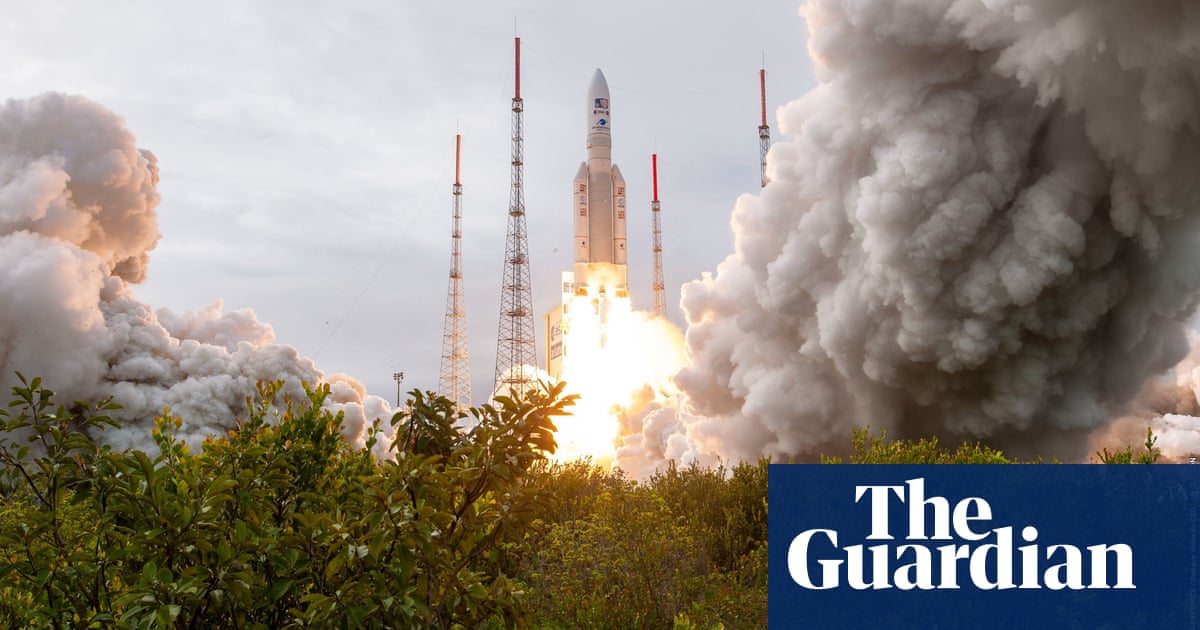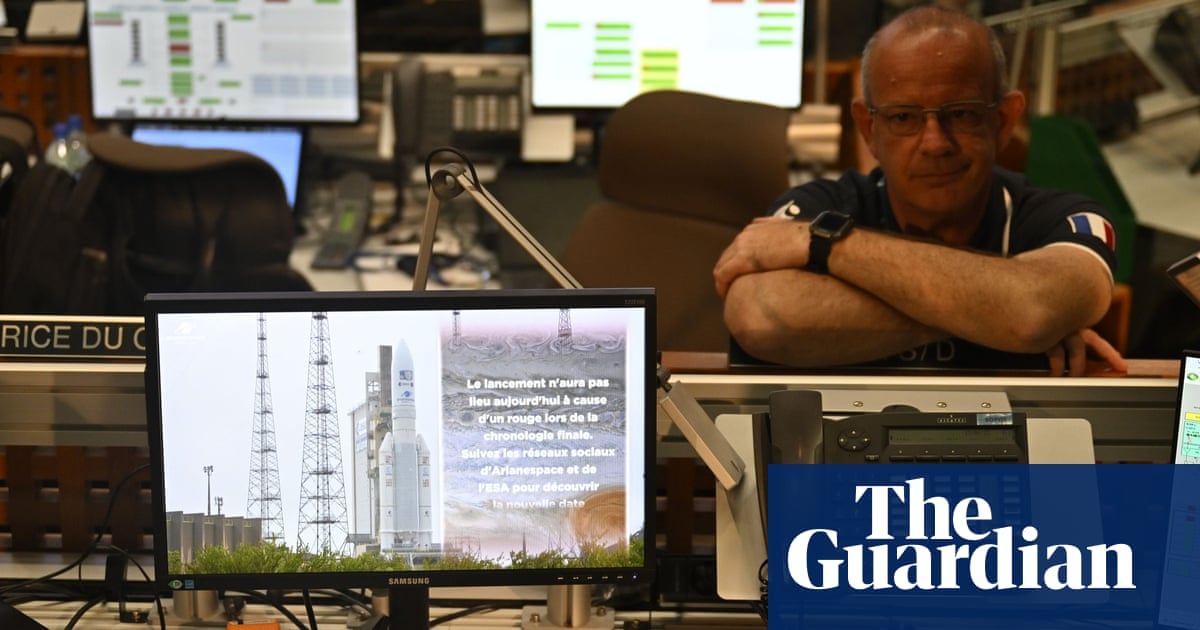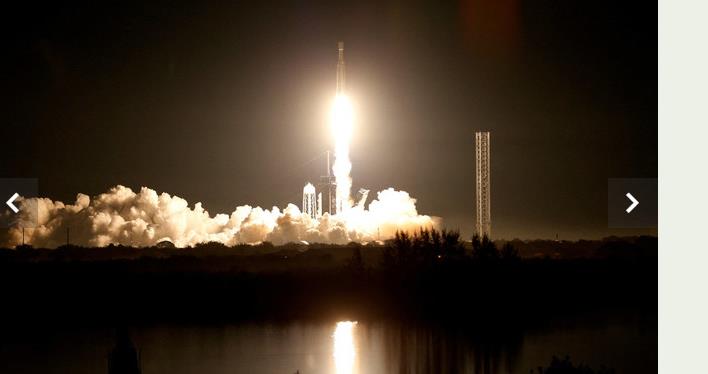
The European Space Agency’s Juice probe has blasted off on a landmark mission to Jupiter’s moons, rising on a plume of white from its launchpad in Kourou, French Guiana, on the north-eastern shoulder of South America.
The mission, which was delayed for 24 hours after lightning threatened to strike on Thursday, intends to uncover the secrets of Jupiter’s Great Red Spot, its enormous polar auroras, and how its mighty magnetic field shapes conditions on the gas giant’s nearby moons.
It is the moons themselves that are the main attraction. Despite the frigid conditions that prevail, nearly half a billion miles from the sun, Juice will visit three of Jupiter’s moons – Europa, Callisto and Ganymede – which harbour deep liquid water oceans beneath their icy surfaces.
The discovery of sub-surface saltwater oceans on Jupiter’s moons has pushed them high up the list of solar system venues to explore for signs of life and habitability. If hydrothermal vents – found on ocean floors all over Earth – exist on the Jovian moons, they may provide enough warmth for life to thrive in the darkness.
“I’m so thrilled to see Juice finally on its way,” said Prof Andrew Coates, from the UCL Mullard Space Science Laboratory, who helped build two instruments on Juice called Pep and Janus. “This is an excellent mission to look at habitability of Jupiter’s moons.”
The £1.4bn Jupiter Icy Moons Explorer powered into the sky on board an Ariane 5 rocket at 1.14pm UK time, with scientists and engineers visibly relieved as the probe embarked on the most complex mission Esa has ever flown in the solar system.
“This is just the start of a long journey to Jupiter, but one that will be worth the wait,” said Prof Emma Bunce, director of the University of Leicester’s Institute for Space and co-investigator on the probe’s J-Mag magnetometer. “It has taken many years of hard work from an incredible international team to get to this milestone.”
Barring any glitches, Juice will spend eight years winding its way to its destination hundreds of millions of miles from Earth. Its route to Jupiter will be far from direct, drawing on multiple gravity assists around Earth and Venus to propel it towards its goal.
On arrival in 2031, the spacecraft will survey Jupiter and its icy moons with a suite of 10 advanced instruments. Among the questions scientists hope to answer is why Jupiter’s Great Red Spot is shrinking, why its third largest moon, Io, is the most volcanically active body in the solar system, and whether there could be, or has ever been, life on Jupiter’s ocean-bearing moons.
Of the three moons Juice is expected to visit, only Europa is considered to have the potential for harbouring life. At just under 2,000 miles wide, it is smaller than Earth’s moon, but with an ocean up to 100 miles deep, it could hold twice as much water as all Earth’s oceans combined. Europa is a particularly compelling target because its ocean is thought to sit on a rocky seafloor, raising the prospect of thermal vents and nutrients that could sustain living organisms.
Juice will perform two flybys of Europa, its visits limited in part by the intense radiation field the moon experiences through being so close to its parent planet. Further observations of Europa, which appears to vent water vapour into space through plumes and geysers, are due to be taken by Nasa’s Europa Clipper probe which will launch next year but arrive earlier than Juice, in April 2030, by taking a more direct route.
Juice will perform 21 flybys of Callisto, a heavily cratered moon, and 12 of Ganymede, which is larger than Mercury and the only moon in the solar system to generate its own magnetic field. When the probe swings into orbit around Ganymede in 2034, it will become the first to orbit a moon other than our own.
While Juice is not equipped to detect life itself, the six-tonne probe will search for pockets of water and the elements and energy sources essential for life. As the probe soars over the Jovian moons it will gather data on their geology, activity and environments.
“I hope this mission will inspire future generations of scientists and explorers all over the globe, just as many of us working in the space industry today have been inspired by previous space missions,” Bunce said. “We have an exciting future ahead in the Jupiter system and look forward to Juice’s rich scientific data return in the coming years.”












